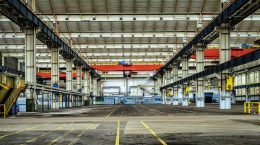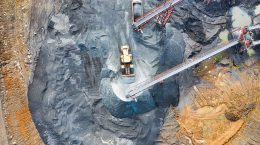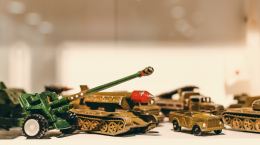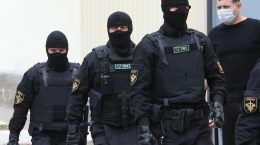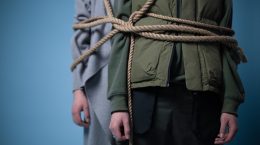On August 9, 2020, Belarusians, outraged by the dictator’s brazen falsification of the presidential election results, massively took to the streets of cities, villages and towns to show their categorical disagreement with what has been happening in the country for the past 26 years. As people say, “patience has burst.” Mass protests began to be suppressed by unprecedented brutality for Europe of the XXI century. The entire civilized world community was horrified by the consequences of mass repressions against Belarusians. The protest, which continues and will continue until the fall of the inhumane government, is exclusively peaceful. The dictator failed to suppress the will of Belarusians and extinguish the fire of the people’s struggle.
A few days after the violence against the people began, hundreds of enterprises and organizations went on a people’s strike. Each of them has its strike committees (strike committees).
The word “strike” practically means the same as “strike”: a complete or partial stoppage of production or other labour with the nomination of several requirements to the management of the enterprise or country.
The first strike committees
We would like to recall: when did mass strikes break out in Belarus and what did it lead to? Did the strikers manage to achieve anything?
At the end of April 1991, eight months before the fall of the totalitarian Soviet regime, Belarus (then the Belarusian SSR) was hit by an economic crisis of unprecedented proportions. Almost all products have risen in price several times: bread – by three times, beef – by 3.5, and school uniforms began to cost 123 rubles with average salaries of the republic from 110 to 150 rubles!
Only vodka has not risen in price. Draw conclusions, our dear readers, why the means for “pacification” and degradation of the nation have not risen in price. It is no coincidence that today we can observe something similar: with almost weekly price increases for vital products (sunflower oil, sugar, cereals, chicken, etc.), vodka prices remain unchanged.
Let’s go back to 1991. It took the Belarusian nation several days to “digest” what happened and draw catastrophic conclusions. The workers of the Minsk Electrotechnical Plant were the first to wake up. In one of the workshops, there was a heated dispute between the factory workers and the management. They talked about the disparity of the figures on the price tags of stores and in the workers’ calculators. The disputes did not lead to anything: the plant’s management announced to the proletarians that there would be no salary increase. After that, the workers massively turned off the equipment and went outside.
The workers of the plant occupied Kozlov Street, several people “saddled” the stopped tram. People said: production will stand until the fulfilment of their requirements, the main one is a salary increase. Soon other factories joined the people’s strike: “Automatic lines” and MTP.
The strikes then lasted several weeks. Some factories were returning to work or were taking to the streets. The centre of the protest at that time was Lenin Square (now Independence Square) in Minsk. At some enterprises, workers chose the “Italian strike” (going to work without a labour process) as a form of protest. The biggest action took place on April 24, 1991, when trains near Orsha railway station stopped. Strike committees appeared at each of the enterprises to coordinate peaceful protests. This trend later significantly influenced the formation of trade unions in the new, independent Belarus.
Even under the totalitarian USSR, there were no repressions and mass dismissals. In Orsha, they tried to punish one of the strike leaders, but protesters immediately surrounded the courthouse. The “accused” got up from the dock and went home. The main demand was fulfiled, salaries have increased, and people returned to their jobs.
At the end of 1991, the USSR collapsed, and three years later, Belarusians made a fatal mistake by electing Lukashenka as their president.
National Strike Committee of Belarus
In 1996, the “Strike of Entrepreneurs of Belarus” was formed in Belarus. It transformed into the “National Strike Committee of Belarus” on November 25, 2003. Since its foundation, its chairman has been a businessman and former political prisoner Valery Levonevsky. During his imprisonment from May 1, 2004, to May 15, 2006, his son Vladimir Levonevsky served as chairman of the Strike Committee.
One of the activities of the Strike Committee is assistance to convicts. For example, in September 2005, the Strike Committee handed over books, sports equipment and other things to the Ivatsevichi penal colony No. 22. Strike Committee offices appeared in the places of imprisonment — by March 2005, they had been formed in five facilities.
Strike committees today
In August 2020, almost every large enterprise had its strike committees. Such modern industrial giants as Belaruskali, MAP, BelAZ, MTP, BMP and dozens of others joined the people’s strike in 2020. On August 18, 2020, the National Strike Committee was established. More than 70 Belarusian private companies and individual entrepreneurs then agreed to take patronage over the striking enterprises.
How the ruble will defeat the dictatorship
The year 2021 was marked by a lot of events for Belarus and Belarusians. Thousands of political criminal cases and victims of the regime, persecution for dissent and even for “thoughtcrime”. The hijacking of a civilian plane to kidnap an independent journalist, the murder of human rights activist Vitaly Shishov on the territory of Ukraine, as well as the attempted abduction of athlete Kristina Timanovskaya during the Olympic Games in Tokyo. The latter was “guilty” only of criticizing lazy officials in the service of the dictator on social networks for putting a runner on another distance due to their negligence.
Such inadequate actions in Belarus and abroad cause quite natural and adequate measures against Lukashenka. The basis of countermeasures is economic sanctions that deprive the dictator of the money he needs to keep power.
Now he is trying by hook or crook to rip off an extra penny from Belarusians: for example, gasoline for 2020-2021 has already become more expensive 20 times. We have already mentioned food products. Yes, you regularly go to the shops. At the same time, the illegal authorities are trying to show the people cheap tricks with “raising” salaries, pensions and social benefits. With a slightly more detailed look at such “increases”, it becomes clear that their size does not even reach the level of inflation in the country.
From all that has been said, we can draw a simple conclusion: a strike is the most effective way to end the cannibalistic regime so hated by us forever.
The treasury is almost empty, and the eastern dictator does not intend to feed his “little brother” anymore. The first one counted on the occupation of Belarus through “integration” (and the annexation of our Motherland). But now he realized that the dictator would not give up sole power because he “has nothing but Belarus”, and the Belarusian people will respond to the occupiers with tough guerrilla war, as in 1941.
That is why the ICCI “Our House” calls on to join a nationwide strike with the onset. International democratic forces will be able to support anyone who refuses to feed the inhumane regime at this time. Moreover, he will not last long in this situation.


